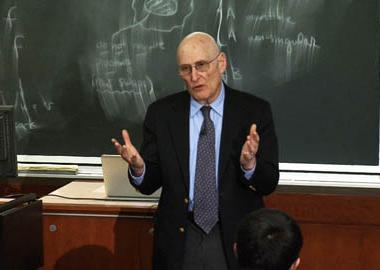 In the nineteen fifties and sixties, students of transportation focused on building infrastructure and applied lessons from the physical sciences to designing mobility. Mobility was facilely linked to the engines of economic growth and expanding GDP. In time, that perspective was replaced by a focus on transportation systems and networks. There was a newfound emphasis on environmental impacts, land use, and intermodal freight. There was also a growing concern on unpriced externalities. Today, Joseph Sussman explains, with many of those problems still unsolved, transportation has entered a new phase-- a period of immense complexity or CLIOS, which stands for complex, large scale, interconnected, open and sociotechical is an acronym that is becoming the mantra of transportation engineers. While it is not as far-reaching as "chaos" to a physicist, it is an approach with far-reaching consequences for the transportation field.
In the nineteen fifties and sixties, students of transportation focused on building infrastructure and applied lessons from the physical sciences to designing mobility. Mobility was facilely linked to the engines of economic growth and expanding GDP. In time, that perspective was replaced by a focus on transportation systems and networks. There was a newfound emphasis on environmental impacts, land use, and intermodal freight. There was also a growing concern on unpriced externalities. Today, Joseph Sussman explains, with many of those problems still unsolved, transportation has entered a new phase-- a period of immense complexity or CLIOS, which stands for complex, large scale, interconnected, open and sociotechical is an acronym that is becoming the mantra of transportation engineers. While it is not as far-reaching as "chaos" to a physicist, it is an approach with far-reaching consequences for the transportation field. To participate in “Complexity 101” engineers must take account of stochastic systems, difficulties relating cause and effect, and non-linear behaviors. They must also recognize complex feedback loops between macro and micro issues; time scale anomalies, and evaluative complexity brought by new stakeholders. Sussman observes,
“ Even if we could wish away behavioral complexity, it would not mean that we know what we should do.” He says that transportation engineering must now embrace management, the social sciences and planning and he warns us eschew narrow representations of complex systems because they are implicitly easier to solve.
Sussman walks us through the new tools of math and advanced technology which have evolved with with CLIOS. In earlier times engineers could not respond with full information, disaggregate demand analysis, or real time operational data. He cites the need to apply these to find new solutions and designs--particularly ones that incorporate flexibility, reliability, and sustainability. Sussman terms these the “bilities”. Taking flexibility as an example, he notes that some transportation providers, and particularly the airlines, are creating tailored and customized services for users. Sussman poses whether the concept of flexibility could be extended to highway travel and “ pay as you go”. Likewise, in automobile design, we are moving away from crash worthiness to a concept of crash avoidance. At a more macro level, Sussman says that we can now solve problems of a scale that seemed unthinkable 5 or 10 years, i.e., problems that were seen to be beyond our computational scope.
Sussman observes a growing connection between economics and transportation. “We are moving toward a period where new technology and mathematical solutions allow us to better recognize and value previously un-priced externalities”. Increasingly, he views transportation as a regionally scaled enterprise that can be managed at the scale of the metropolitan regional level. That aligns us, he says, with economists who have long talked about metro based regions as the economic engine of society. He also says there is a need for a large national vision on the scale of the one that created the national highway infrastructure. Sussman endorses the view that the American people yearn for a big vision and are tired of cycles of crisis and doom.
...Read the full article/Watch Video
Sussman walks us through the new tools of math and advanced technology which have evolved with with CLIOS. In earlier times engineers could not respond with full information, disaggregate demand analysis, or real time operational data. He cites the need to apply these to find new solutions and designs--particularly ones that incorporate flexibility, reliability, and sustainability. Sussman terms these the “bilities”. Taking flexibility as an example, he notes that some transportation providers, and particularly the airlines, are creating tailored and customized services for users. Sussman poses whether the concept of flexibility could be extended to highway travel and “ pay as you go”. Likewise, in automobile design, we are moving away from crash worthiness to a concept of crash avoidance. At a more macro level, Sussman says that we can now solve problems of a scale that seemed unthinkable 5 or 10 years, i.e., problems that were seen to be beyond our computational scope.
Sussman observes a growing connection between economics and transportation. “We are moving toward a period where new technology and mathematical solutions allow us to better recognize and value previously un-priced externalities”. Increasingly, he views transportation as a regionally scaled enterprise that can be managed at the scale of the metropolitan regional level. That aligns us, he says, with economists who have long talked about metro based regions as the economic engine of society. He also says there is a need for a large national vision on the scale of the one that created the national highway infrastructure. Sussman endorses the view that the American people yearn for a big vision and are tired of cycles of crisis and doom.
...Read the full article/Watch Video
For more techical information visit our sister website www.engineeringmaintenance.info or for equipment procurement please visit www.engineeringtrader.com

